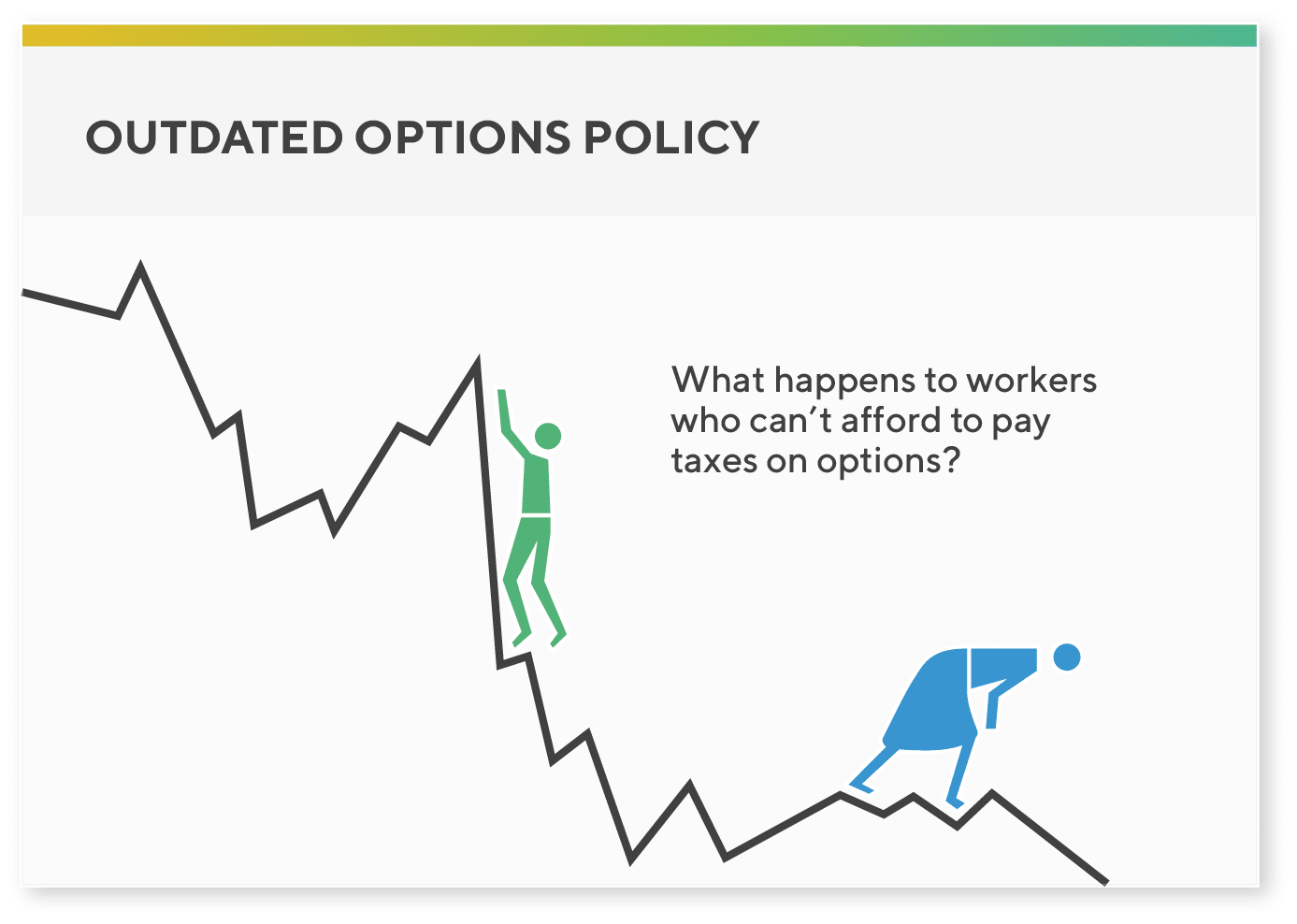Trending
Stock Options and Other Equity Compensation Strategies
/in Equity & Compensation/by Benjamin - WonderlyShare this entry

Why the Stock Option System Is Broken and Some Simple Ideas for Making it Work Better
By Mike Dinsdale, Chief Financial Officer, Gusto

By Mike Dinsdale, Chief Financial Officer, Gusto
Incentive stock options plans were originally designed to encourage employees to patiently help build startups over the long term. By leaving the company, they would forfeit a considerable amount of wealth.
But with the most successful startups staying private well beyond the old IPO windows—the median age of a company when it makes its IPO has grown from seven years to 12 years—the entrenched stock option structure can hurt both companies and employees.
Staying private longer makes a lot of sense for #breakawaygrowth companies. It allows them to focus on their operations and not worry about quarterly reports. It also means that more of the wealth creation goes to employees and early investors—the people who helped build the company.
The downside, which many companies only realize too late, is that the stock option structure, as currently designed, often doesn’t scale well beyond year seven. And it can create a variety of problems if companies don’t take steps to do something about it early.
To understand why, let’s first cover some basics. There are two separate costs for employees to exercise their vested options. The first is the purchase price. This is typically fairly low.
It’s the related tax liability that’s the crusher. Purchased options are taxed as income under the alternative minimum tax (AMT), a special tax structure that’s often triggered when people exercise options; the tax is assessed on the difference between the strike price and the 409A price, which can be a lot when a company’s valuation is skyrocketing. This can be many dollars per share. Many people simply can’t afford to pay it because, in all likelihood, their startup salary didn’t allow for socking away the kind of cash necessary for such a large transaction.

So, what happens in today’s highest-performing startups? Employees, all the way up the ladder, men and women who have worked incredibly hard to help build the company, are trapped. Here are a few scenarios where employees face either losing their hard-earned vested shares or face near financial ruin by having to come up with the cash for the exercise price and tax liability:
If the employee is a good financial planner, she might want to exercise her vested options in an effort to get those shares into long-term capital gains, which have a much lower tax rate. However, without the necessary cash, and if she thinks she’ll be subject to the AMT, she’s forced to hold and wait to exercise and sell at the same time. At a future date, foreclosing on her long-term capital gains savings when her tax bill will be at the higher ordinary income rate foreclosing on her long-term capital gains savings.
If an employee has no intention of leaving the company and is planning on patiently waiting for that future exercise and sale event, she’s going to come up against an ominous immovable wall with a federally mandated expiration of all options after 10 years. Today, employees across all kinds of private companies are starting to be forced into a very stressful and potentially demoralizing “use it or lose it” situation – all of this after a decade of loyal service to the company.
If an employee wishes to or needs to leave the company, she typically has 90 days, mandated by the company, to come-up with the necessary cash to exercise her options and the money to pay the AMT (if applicable) or face having them expire and absorbed back into the company. So people stay. But they can feel stuck. Employees find their hands forced if they want to take advantage of their stock option plans in these situations.
Then there are companies who can’t bring themselves to let an executive go because they’re no longer a fit. I’ve seen people kept on for years because the company cared about them, valued their contribution in the early days of the company, but didn’t want to put them in a use-it-or-lose-it situation. These people are often referred to as “vest in peace” as they’re shunted off to some far-flung part of the company in a low-impact role.
From my point of view, the antiquated options structure is incredibly unfair to those team members who have been steadfast contributors to the company’s success. How can someone come up with $100,000 or more, whether she wants to stay or it’s time for her to leave? Don’t employees deserve to have maximum optionality to create wealth for themselves and their families?
Solving the liquidity problem
My current company, Gusto, has a different approach. When employees leave the company after three years, their 3-month post-termination exercise window disappears and they have the full 10 years from the grant date to exercise. It gives them more time to decide whether they want to do it. Josh Reeves, Gusto’s CEO and co-founder put it this way: “The right thing to do is to treat your employees like true owners of the business. We don’t want to constrain employees by “golden handcuffs” — they don’t stay simply to keep their stock options, and they’re not forced to spend money (which they may not have) exercising within three months of leaving. Our goal is to put the power and flexibility into the hands of our employees. The standard equity packages are slowly changing, and we’re excited to be part of this new wave of treating the employee as a true owner of the business.”
If you work hard for three years, you’ve earned those options, we think this is the fair thing to do for our employees. Here’s Gusto’s crash course to offering equity that shows entrepreneurs how to roll out an equity plan that’s in line with their business model, growth goals, and of course, the core values that drive how they’re building their team.
My former company, DocuSign, where I was CFO for six years, organized a managed secondary program. To balance the retention vs. reward goals, we capped the amount and percent of vested options each employee could sell. The program provided a big pressure valve relief as everyone has their own set of life needs—homes for their families, debt hanging over their heads, a sick parent, and so on.
We realized that, without having provided the employees with an outlet for some liquidity, they would have most likely found their own way in a treacherous secondary market, where they risked selling their shares at a deep discount, perhaps 50% of what they should have gotten.
Often, employees don’t have the experience of sophisticated buyers; they lack complete financial information and sometimes have difficulty expressing the strategy and vision of the company that justifies the real value.
And they would have done so while running afoul of company policy from selling outside of a structured program. Furthermore, should our employees have gone it alone on the secondary market, the company risked seeing those shares fall into the hands of new shareholders whom we don’t know anything about nor had any basis of trust for how they might behave.
Unfortunately, DocuSign didn’t take the extra step of extending the exercise period to let long-term employees keep vested options after they left.
We as leaders must protect the value that is created—it’s our fiduciary duty. All boards should be in support of extended option exercise and managed secondary programs.
Building great companies and being a great leader is hard and changing the way things are done takes courage and conviction. That’s the challenge I give to every company and board. I hope you all accept it and help me drive change. It’s the right thing to do.
Related Blog Posts

The State of Venture Debt

The 409a Valuation Process





